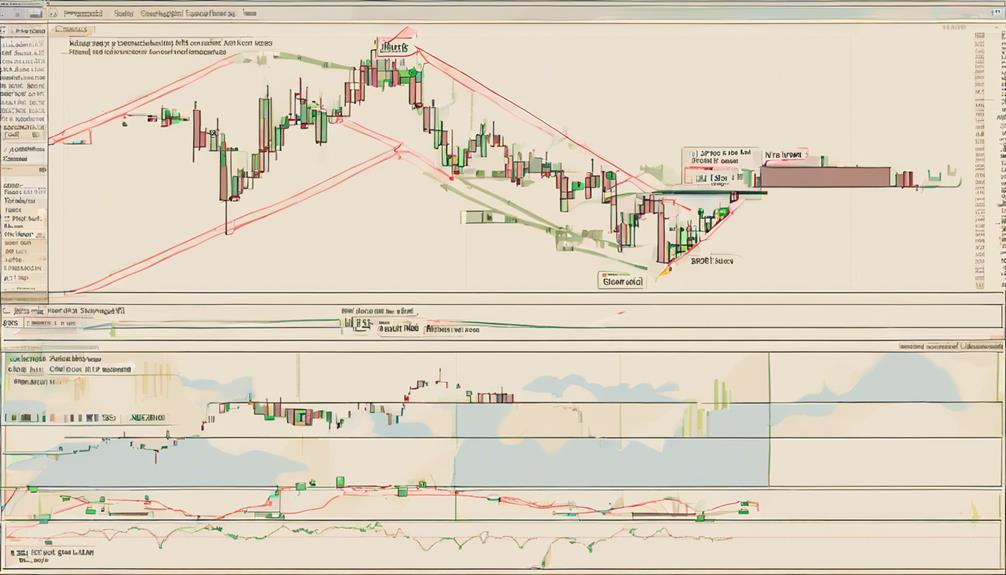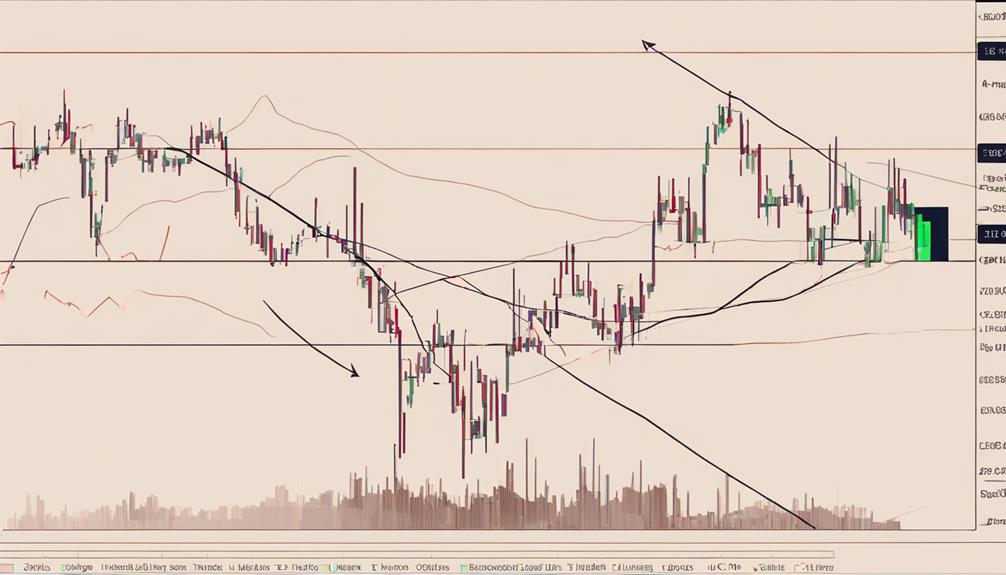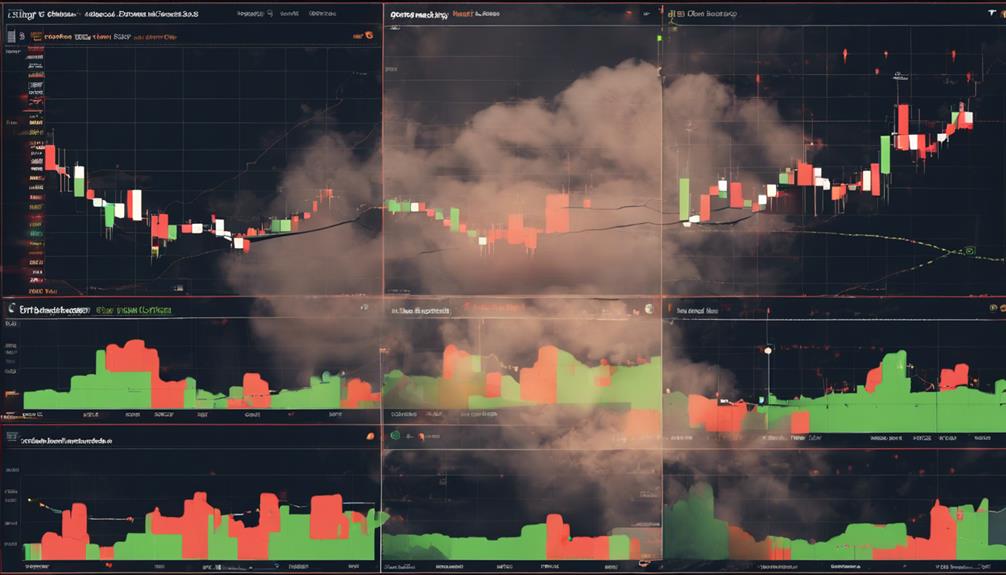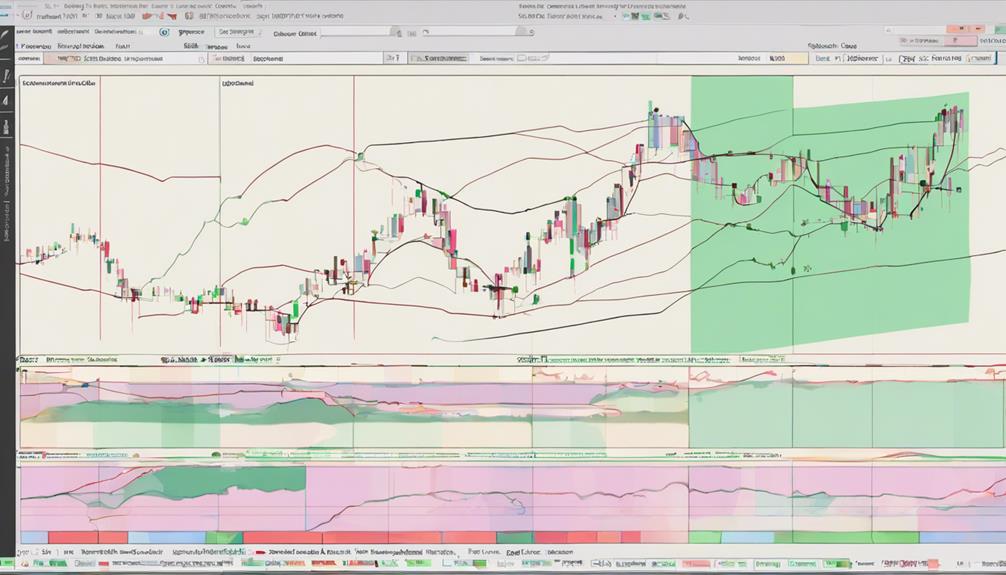Have you ever wondered how the Ichimoku Cloud Indicator can simplify your trading decisions and potentially enhance your profitability in the market?
Understanding this tool's components and interpreting its signals could be the key to unlocking a more strategic approach to your trading endeavors.
By exploring the intricacies of this indicator, you might uncover valuable insights that could significantly impact your trading success.
Understanding Ichimoku Cloud Indicator Components
To comprehend the Ichimoku Cloud indicator fully, grasp the intricate components that make up this powerful analytical tool.
The Ichimoku Cloud indicator consists of the Tenkan-Sen, which reflects average price highs and lows over the last 9 periods, and the Kijun-Sen, identifying trend reversals based on the midpoint of the last 26 periods.
Additionally, the Chikou Span lags behind the current price by 26 periods to confirm trend signals.
The Senkou Span A and Senkou Span B form the cloud by calculating midpoints of different periods, providing support and resistance levels crucial for trading decisions.
Understanding these components is essential for utilizing the Ichimoku Cloud effectively in analyzing market trends and identifying potential entry and exit points.
Interpreting Conversion and Base Lines

Interpreting the Conversion and Base Lines in Ichimoku Cloud analysis reveals crucial insights into market momentum dynamics. The Conversion line, reflecting short-term momentum through a 9-period average of highs and lows, interacts with the Base line, which signifies medium-term momentum with a 26-period average.
Crosses between these lines offer clues about trend changes, while also serving as dynamic support and resistance levels during price movements. By monitoring the relationship between the Conversion and Base lines, traders can better gauge momentum shifts and potential entry or exit points in the market.
Understanding how these lines interact, based on averaging highs and lows, provides valuable insights into the underlying strength or weakness of a trend.
Decoding Ichimoku Cloud Signals

When decoding Ichimoku Cloud signals, understanding key indicators is essential for navigating market trends effectively.
The Ichimoku Cloud signals bullish momentum when the price is above it and bearish momentum when below.
A bullish signal occurs when the Conversion Line crosses above the Base Line, indicating upward momentum.
The Kumo twist, where Senkou Span A crosses over Senkou Span B, indicates a potential trend reversal.
Chikou Span above the price suggests bullish momentum, while below the price implies bearish sentiment.
Traders utilize the Cloud's thickness to assess market volatility and identify potential support/resistance levels.
Utilizing Ichimoku Cloud for Trading

Key to successful trading with the Ichimoku Cloud indicator is understanding how to effectively utilize its components in analyzing market trends and making strategic decisions.
The Ichimoku cloud system combines the Conversion Line and Base Line to form the cloud, providing a visual representation of potential support and resistance levels. The cloud's span consists of leading and lagging lines that offer insights into future price movements.
By observing the interaction between price and the cloud, traders can gauge the strength of a trend and identify potential entry or exit points. Utilizing the Ichimoku Cloud involves analyzing multiple time periods to confirm signals and staying informed of the overall market trend.
This technical tool can enhance your trading strategy by providing a comprehensive view of market dynamics.
Enhancing Trading Strategies With Ichimoku Cloud

Enhance your trading strategies effectively by incorporating the Ichimoku Cloud indicator into your analysis. When combined with RSI, this powerful duo can significantly improve your trade signals and decision-making process. Here's how to enhance your trading strategies with the Ichimoku Cloud:
- Utilize RSI divergences alongside Ichimoku Cloud for identifying potential trend reversals.
- Confirm high probability trade setups by incorporating RSI with Ichimoku Cloud analysis.
- Consider price crossing the Conversion/Base lines post an RSI divergence as a potential trade exit point.
- Enhance the robustness of your trend reversal identification by integrating RSI into your Ichimoku strategy. This comprehensive approach can lead to more informed trading decisions.
Can I Learn to Use the Ichimoku Cloud Indicator from Your Simplified Guide?
Yes, you can definitely learn to use the simplified ichimoku cloud indicator from our guide. We have designed a user-friendly and comprehensive resource that will walk you through the basics of this powerful technical analysis tool. With our simplified guide, you’ll be able to grasp the concept and start utilizing it in no time.
Frequently Asked Questions
What Is the Best Indicator for Ichimoku Cloud?
The best indicator for Ichimoku Cloud is the Tenkan-sen line. It helps identify short-term price momentum and potential trend reversals. Traders often use it for early entry signals and to gauge market trend strength.
What Are the Drawbacks of Ichimoku?
When considering the drawbacks of Ichimoku, keep in mind its subjectivity in interpretations and potential signal inconsistencies. It's important to corroborate Ichimoku signals with other tools for validation in your trading strategies.
How Accurate Is Ichimoku Cloud Indicator?
In evaluating the accuracy of the Ichimoku Cloud indicator, consider its ability to provide reliable signals for trend direction and reversals. Traders globally trust its support, resistance, and momentum insights, backed by historical data and successful backtesting.
Which Timeframe Is Best for Ichimoku?
For Ichimoku, the best timeframe varies based on your goals and style. Day traders might favor quick 1-hour signals, while swing traders lean towards reliable daily trends. Tailor your choice to match your strategy.
Conclusion
In conclusion, mastering the Ichimoku Cloud Indicator can open doors to profitable trading opportunities. By understanding its components and decoding signals, traders can navigate the market with clarity and confidence.
Utilizing this powerful tool can enhance trading strategies and improve decision-making processes. Like a guiding light in a stormy sea, the Ichimoku Cloud Indicator illuminates the path to success in the world of trading.
